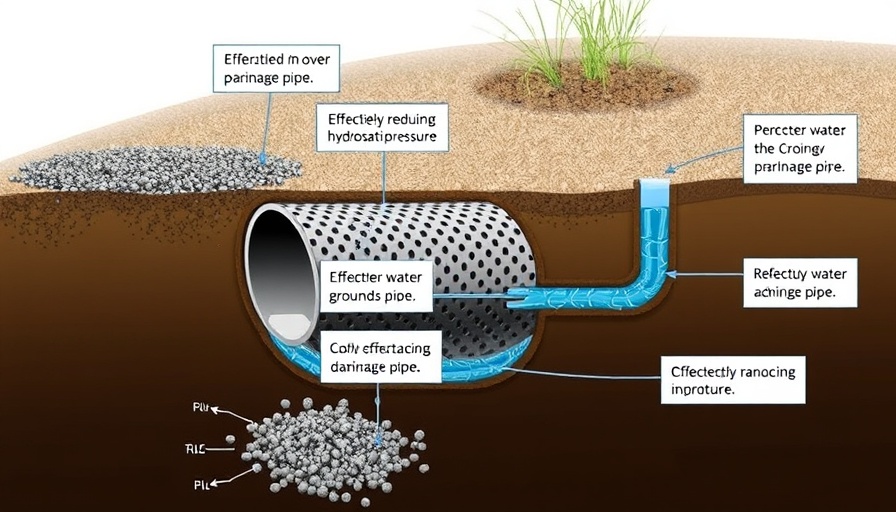
Chernobyl: A Disaster That Shaped Nature’s Resilience
On April 26, 1986, the world experienced a catastrophe that would leave an indelible mark on history. The Chernobyl disaster, which began as a safety test gone awry, unleashed a trail of destruction and unforeseen consequences that extended far beyond the immediate destruction. In just minutes, the nearly placid life of Pryat was forever altered.
In 'Chernobyl's Paradox: The Deadliest Garden on Earth,' the video delves deep into the aftermath of the Chernobyl disaster, revealing compelling insights that inspire this reflection on nature's resilience and the lessons learned.
The Silent Guardian: Nature's Whisper
As firefighters raced into battle against the fire fueled by nuclear fission, the fallout of their bravery was a heavy burden on the community. For 36 hours, residents unknowingly absorbed lethal doses of radiation while believing in the safety of their homeland. What transpired next was a swift and chaotic evacuation that would transform a bustling city into a ghost town. Children left their toys and families left their comforts, believing they would soon return. Unfortunately, they would never again inhabit the homes that once resonated with laughter.
Pryat: A Haunting Reminder of Human Cost
Pryat stands today as a somber testament to the disaster—a city filled with fragmented lives and stories intertwined with tragedy. Inside darkened rooms of abandoned buildings, dolls, school books, and gas masks lie in wait, relics of lives disrupted by fear and uncertainty. It’s a powerful reminder of how swiftly circumstances can change and how quickly we can lose what we hold dear.
The Nature of Resilience: Rebirth Amid Devastation
Decades later, Chernobyl has morphed from a symbol of desolation to a paradoxical haven for nature. Despite the lingering toxic legacy, the now-deserted landscape has become an unexpected sanctuary for wildlife. With human activity absent, nature has begun to reclaim the land and breathe life where devastation once held court. Forests filled with resilient species flourish, as do the animal populations that thrive outside the scope of human interference. It raises a compelling question: Is human presence a greater threat to biodiversity than radiation itself?
A Sanctuary Born from Catastrophe
The exclusion zone now buzzes with life. Elk, deer, and even wolves roam freely, asserting their claim over a landscape that humans once dominated. Birdsong fills the air where silence once lingered, and wetlands support a thriving habitat for amphibians and insects. This striking transformation serves as a powerful story about nature’s strength and capacity for renewal in the wake of human errors.
The Lessons of Chernobyl: Our Responsibility
Chernobyl’s narrative is not just about the horrors of nuclear tragedy but also about responsibility. The colossal arch protecting the reactor's deadly remains is a testament to our commitment to rectify the past. It represents humanity's ability to respond to its mistakes and the importance of safeguarding future generations. This once-occupied land now offers lessons about safety, health, and the balance between human activity and the environment.
A Dual Legacy: Life and Loss
The contrasting legacy of Chernobyl is both humbling and inspiring. While ghosts of lost friends and family echo in the silence of Pryat, life flourishes in the surrounding wilderness. The scars of the past remind us that catastrophe can give rise to unexpected beginnings, a theme that resonates through the very fabric of human existence. Nature’s reclaiming of human spaces reflects our enduring hope—a reminder that life persists even in adversity.
Navigating the Path Forward: A Reflection on Our Choices
As we reflect on Chernobyl's enduring story, we must remember our role in shaping a world where safety, health, and environment are prioritized. The question remains: How do we prevent history from repeating itself? By prioritizing sustainability in our actions and working together to protect the fragile balance of life, we ensure that futures are brighter than the past, and that nature can reclaim its rightful place.
While mourning the losses highlighted in the Chernobyl narrative, let us also celebrate the resilience of life—its ability to adapt and thrive amidst adversity. It is an invitation for us as a society to focus on nurturing our environment and making informed decisions that foster sustainability, paving the way toward a healthier future for all.
 Add Row
Add Row  Add
Add 






Write A Comment